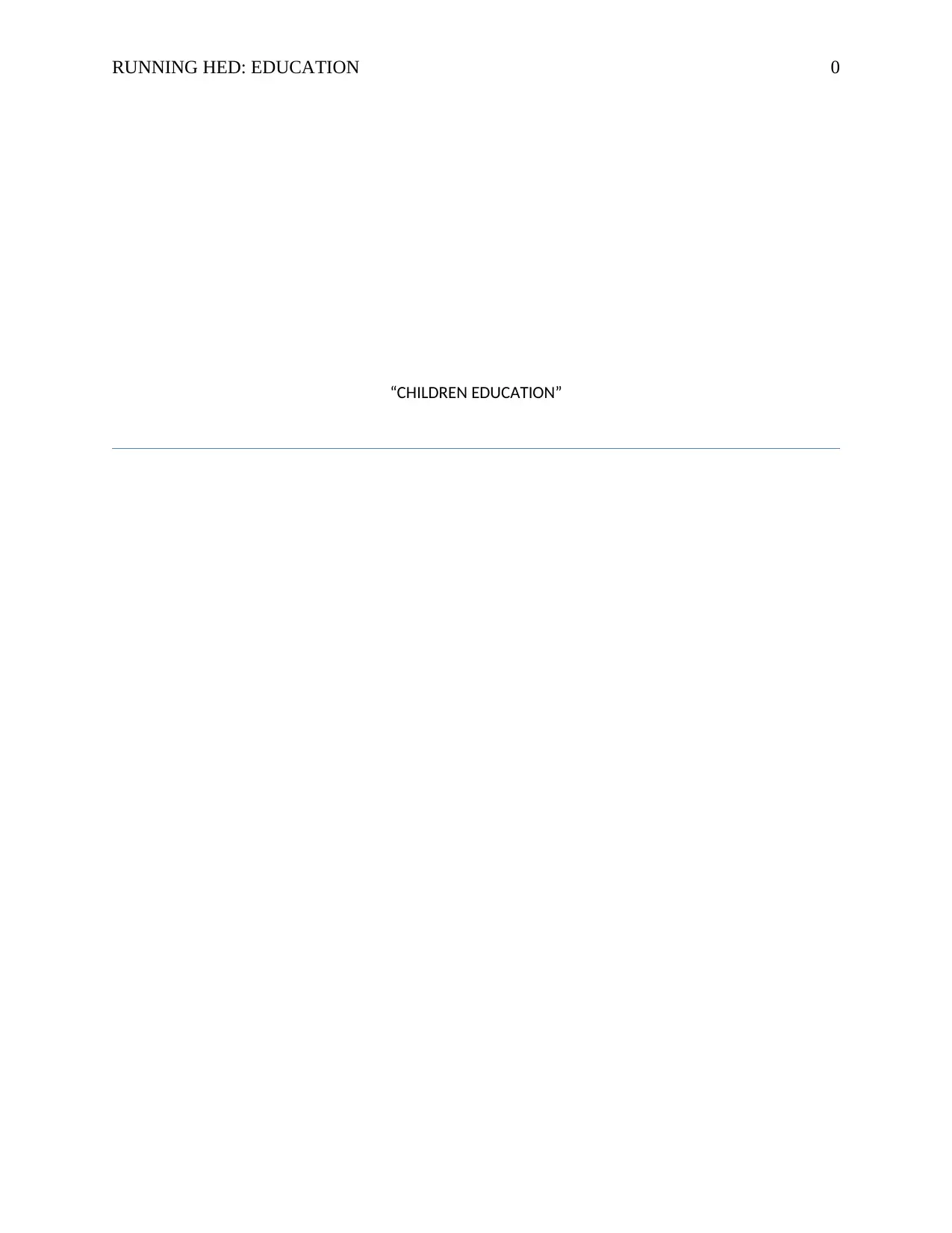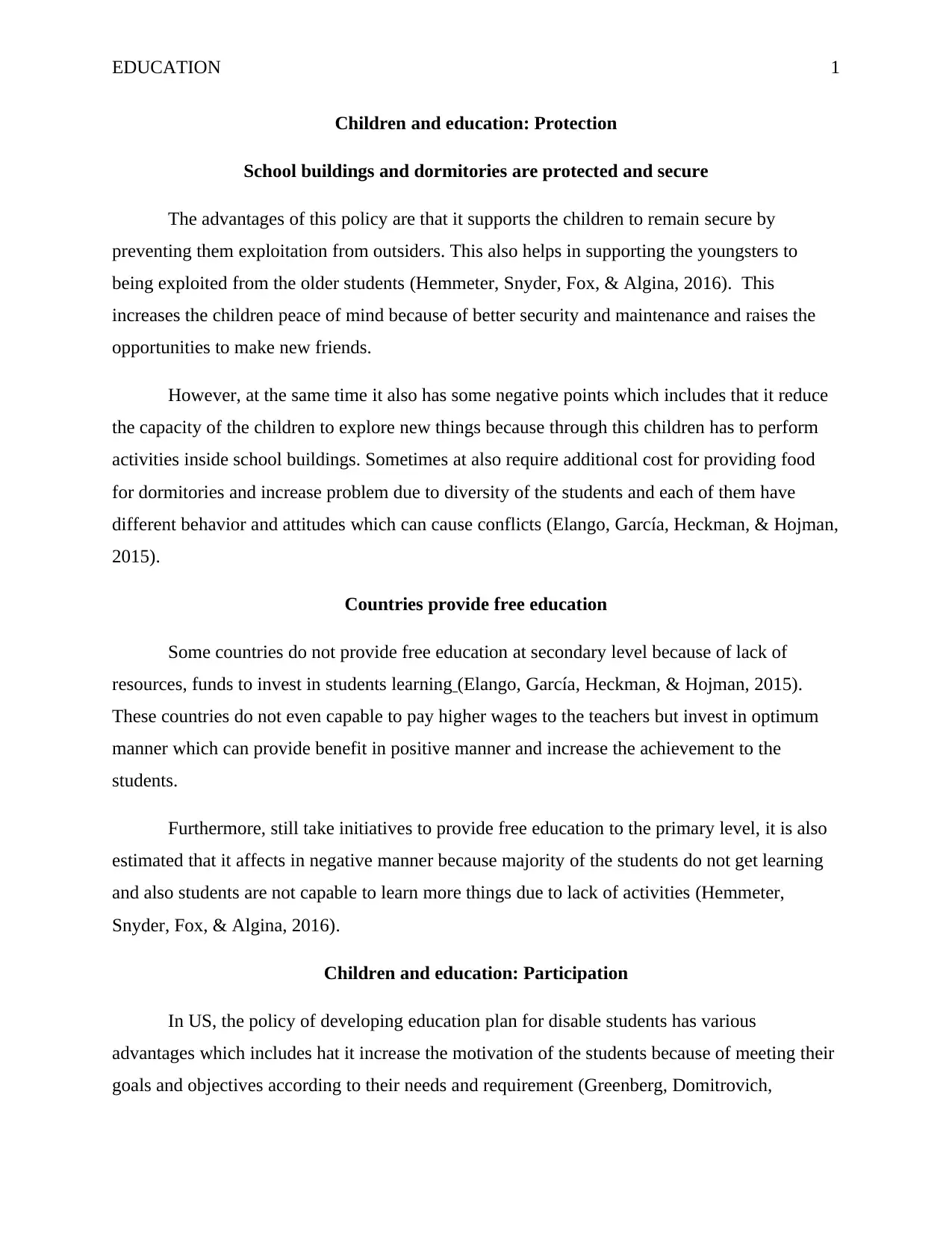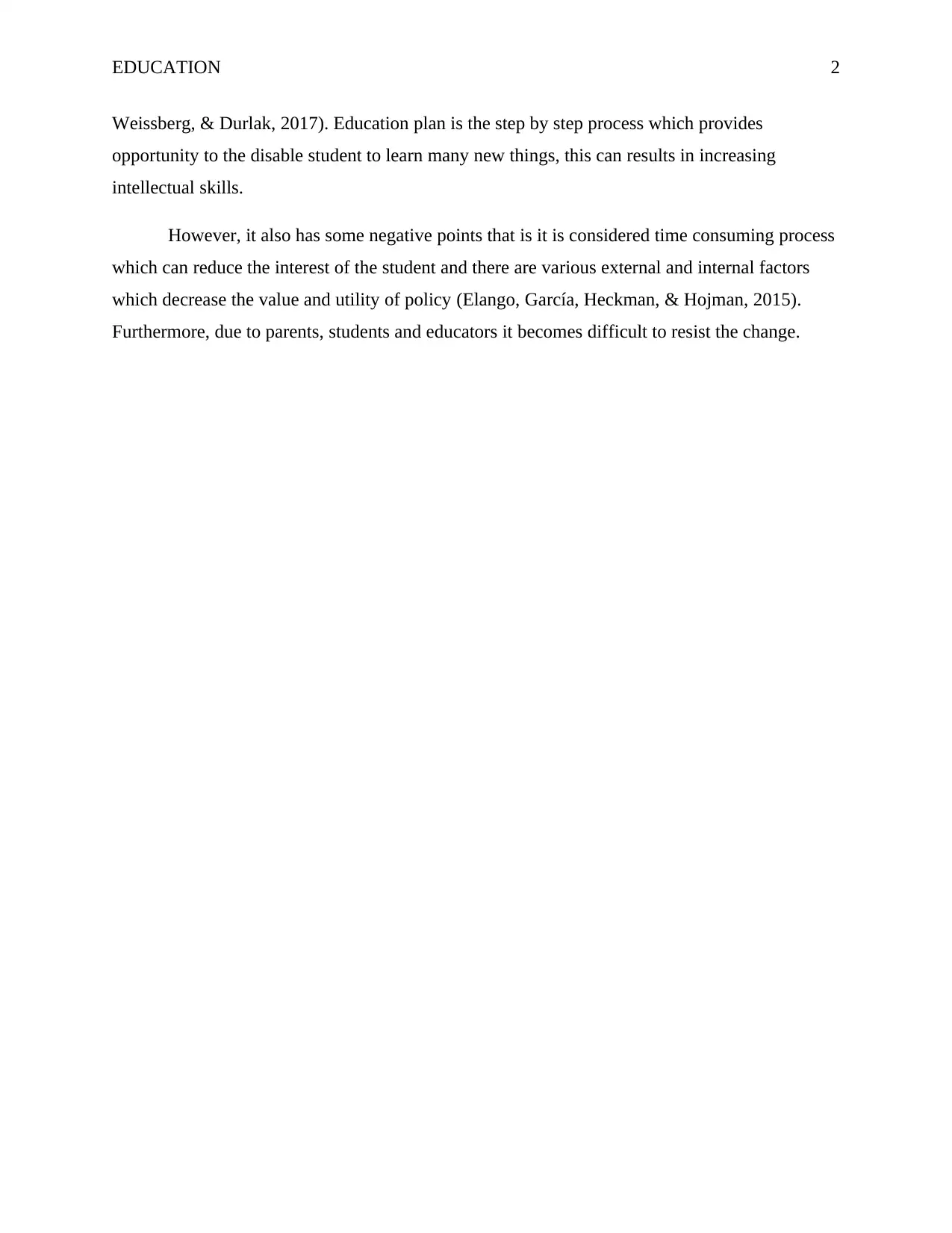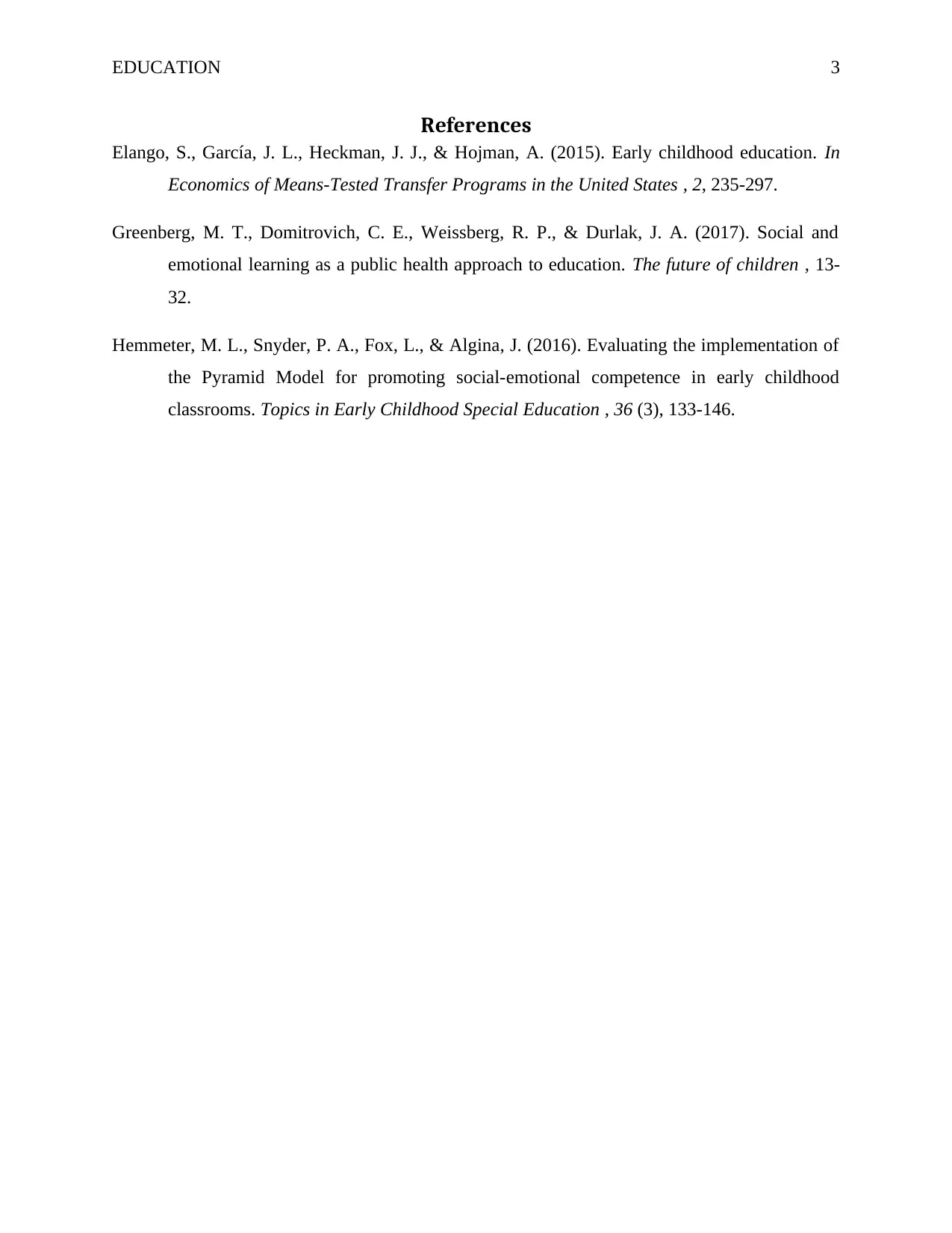University Education: Gov 370 - Children's Education Rights Analysis
VerifiedAdded on 2022/09/16
|4
|607
|23
Discussion Board Post
AI Summary
This discussion post analyzes the right to education, focusing on protection policies such as secure school buildings and dormitories, and the provision of free education. It explores the advantages, like increased security and potential for social development, and disadvantages, such as reduced exploration and potential for conflict. The post references the education plan for disabled students in the US, discussing its benefits in motivation and intellectual skill development, while also acknowledging the time-consuming nature and external factors that can impact its effectiveness. The assignment references the Wall book chapter and relevant research papers to support its arguments.
1 out of 4








![[object Object]](/_next/static/media/star-bottom.7253800d.svg)